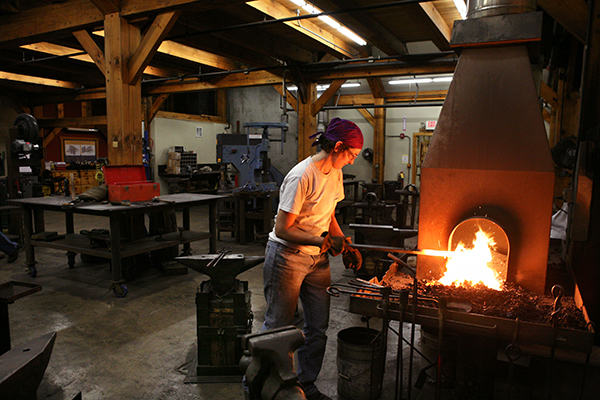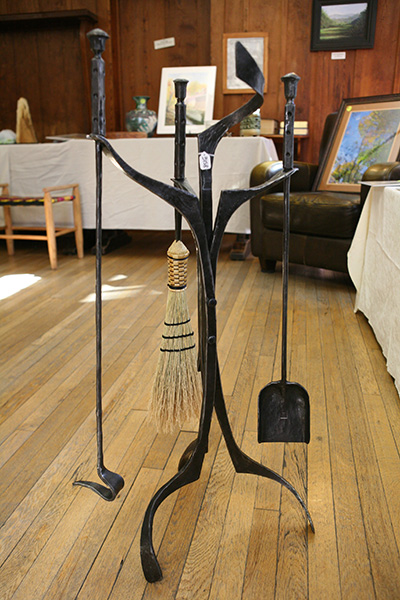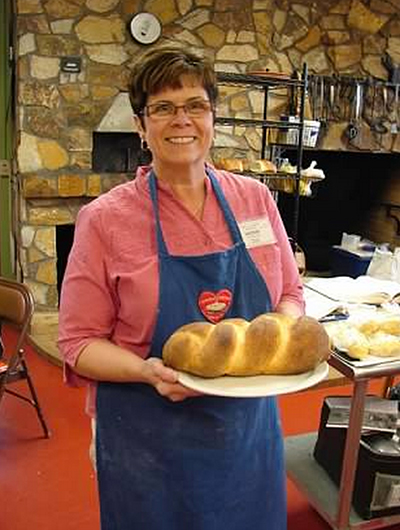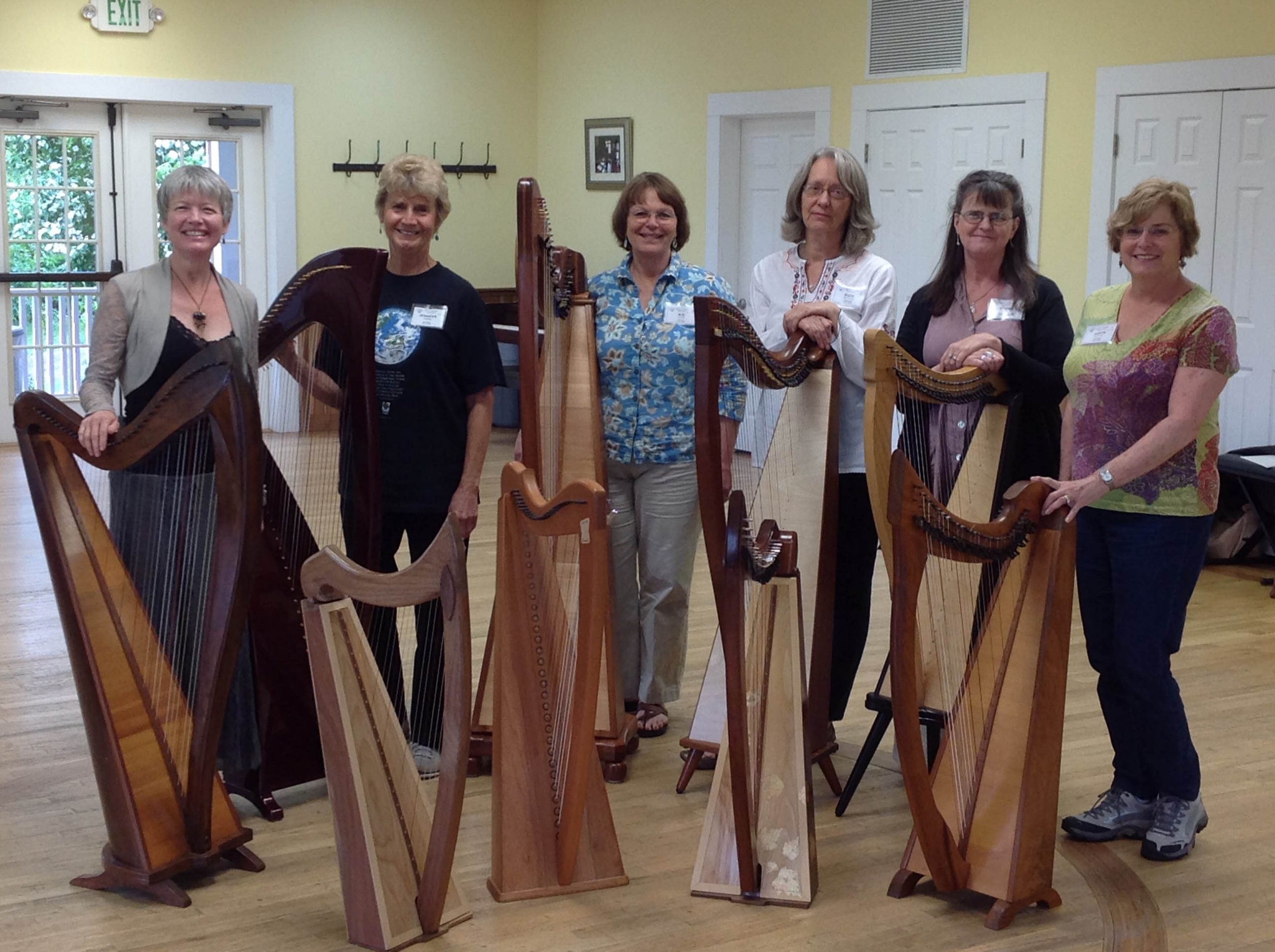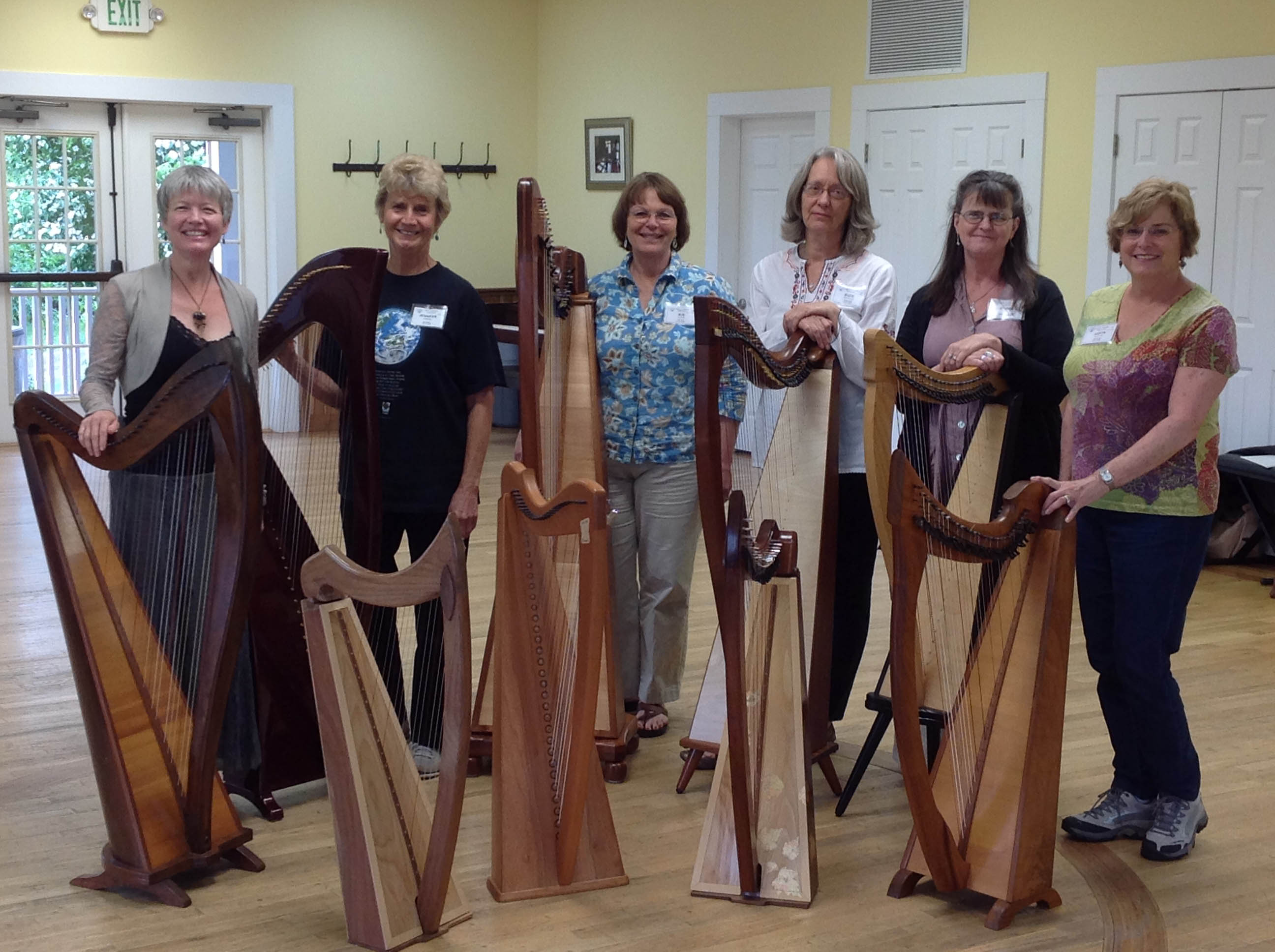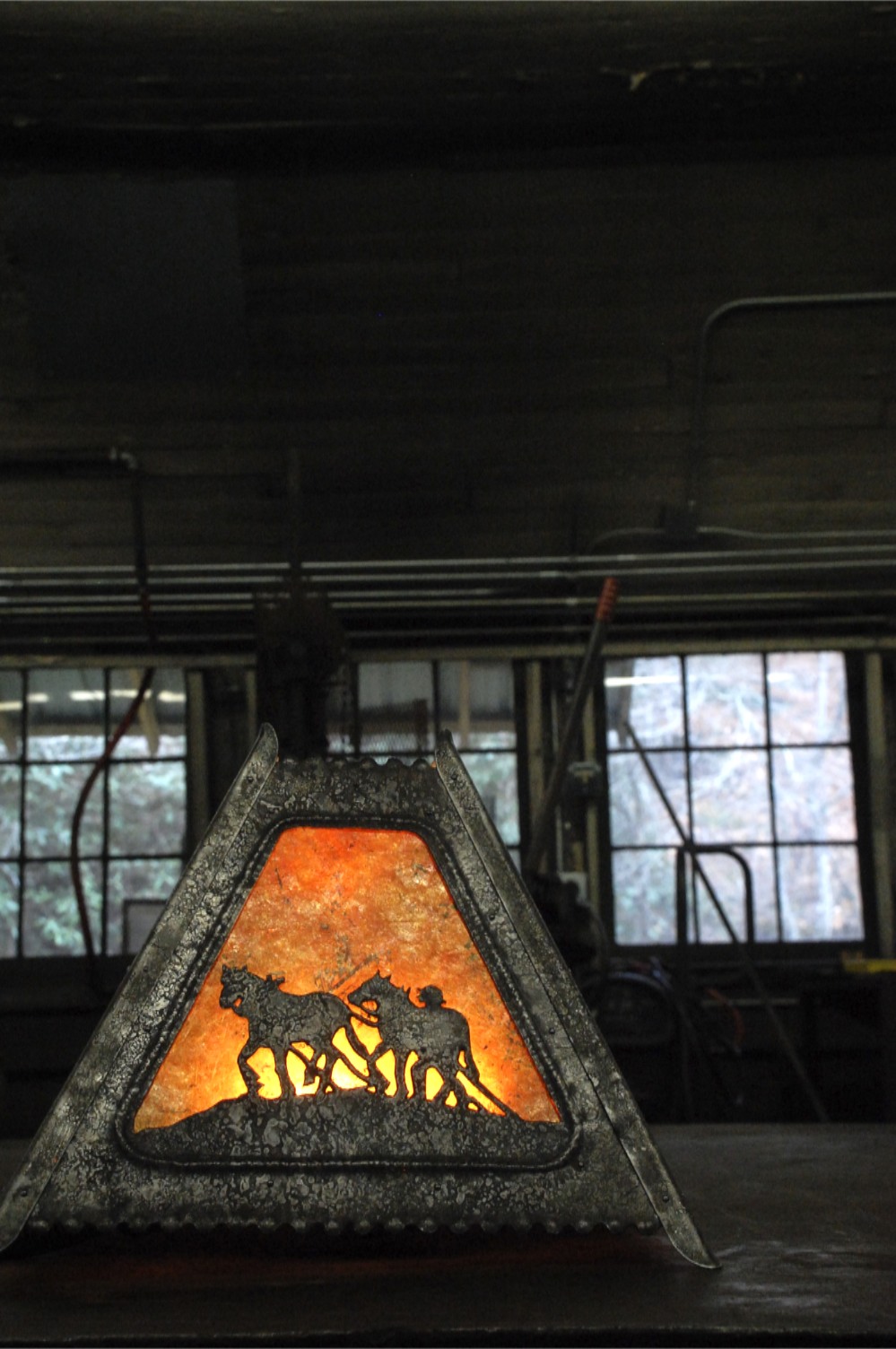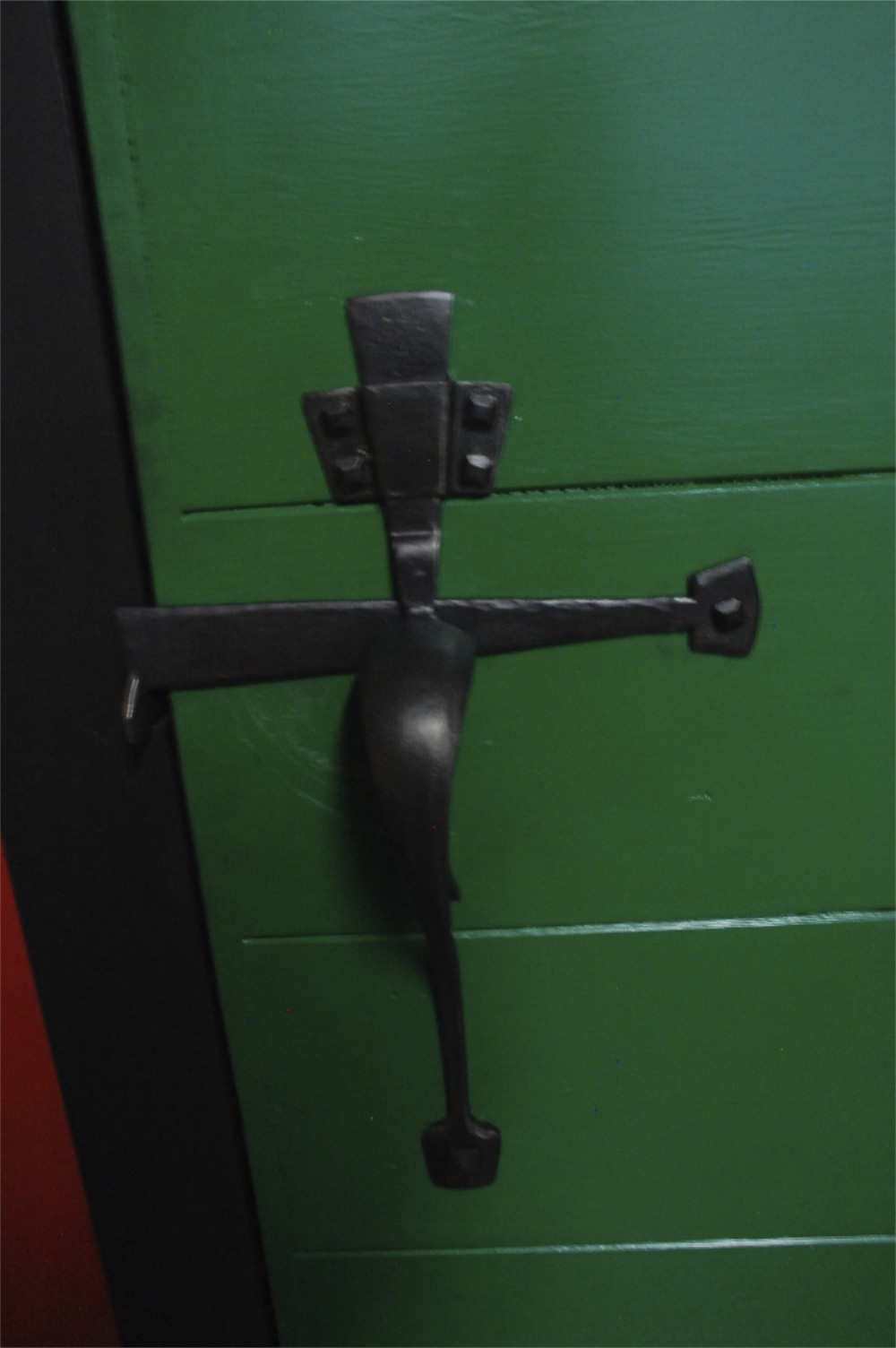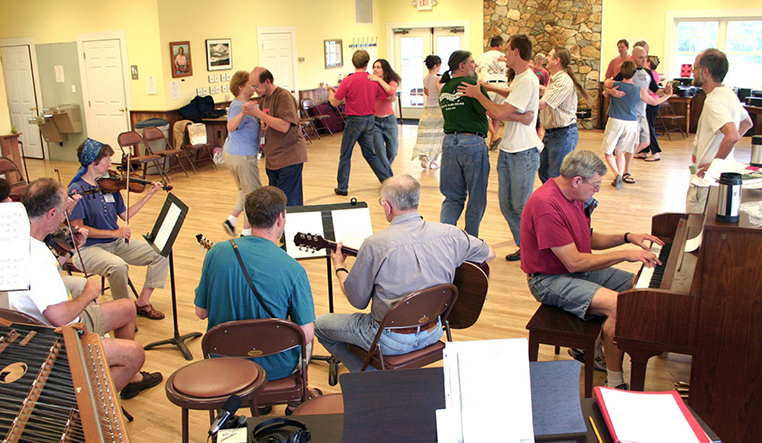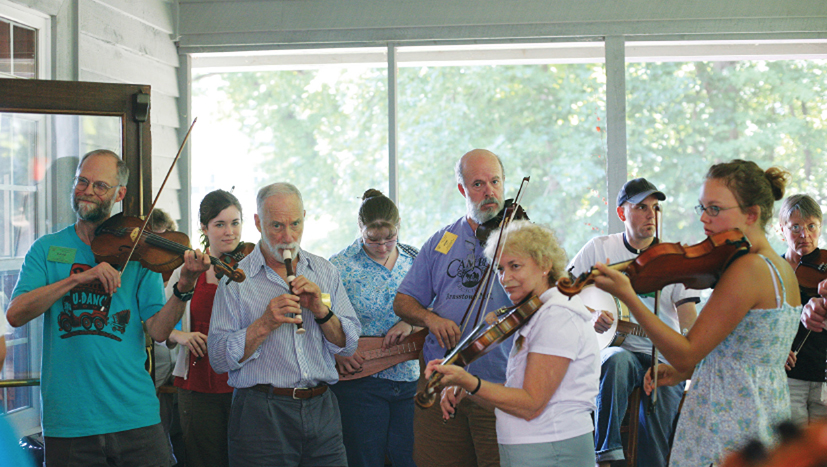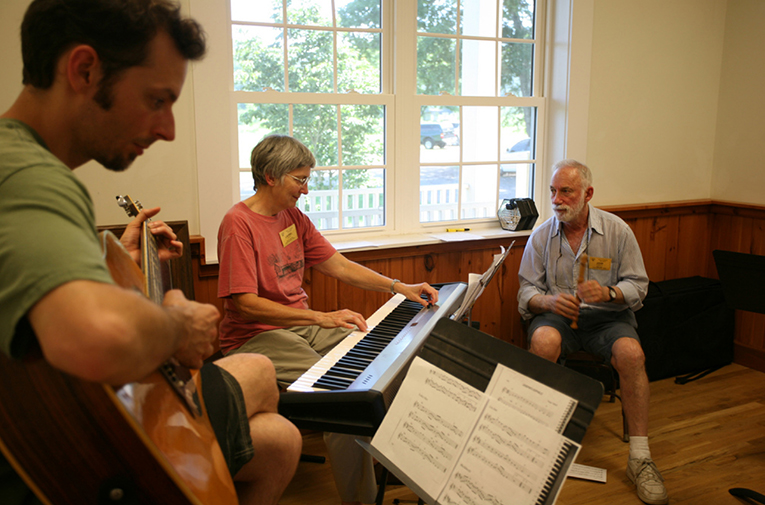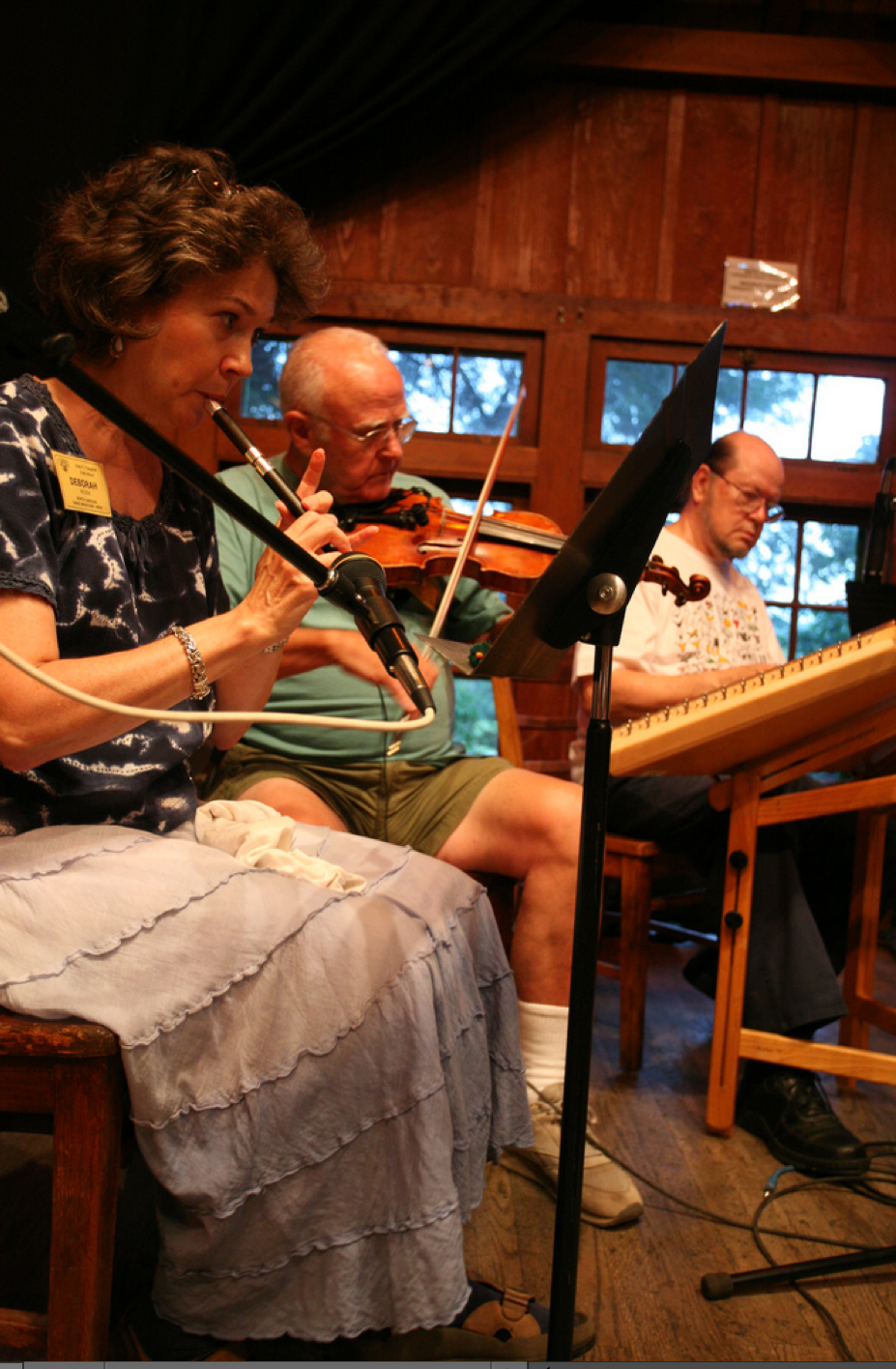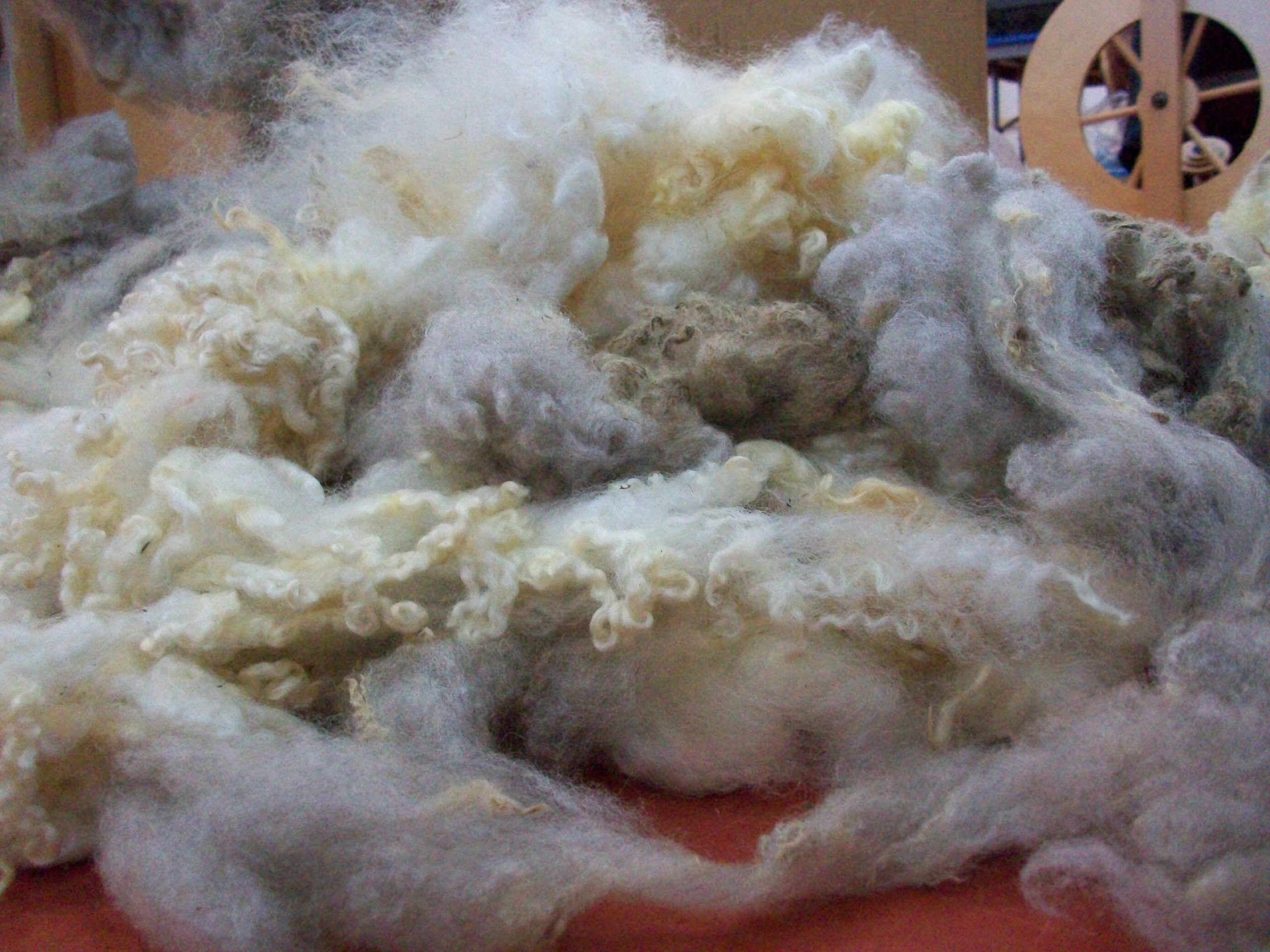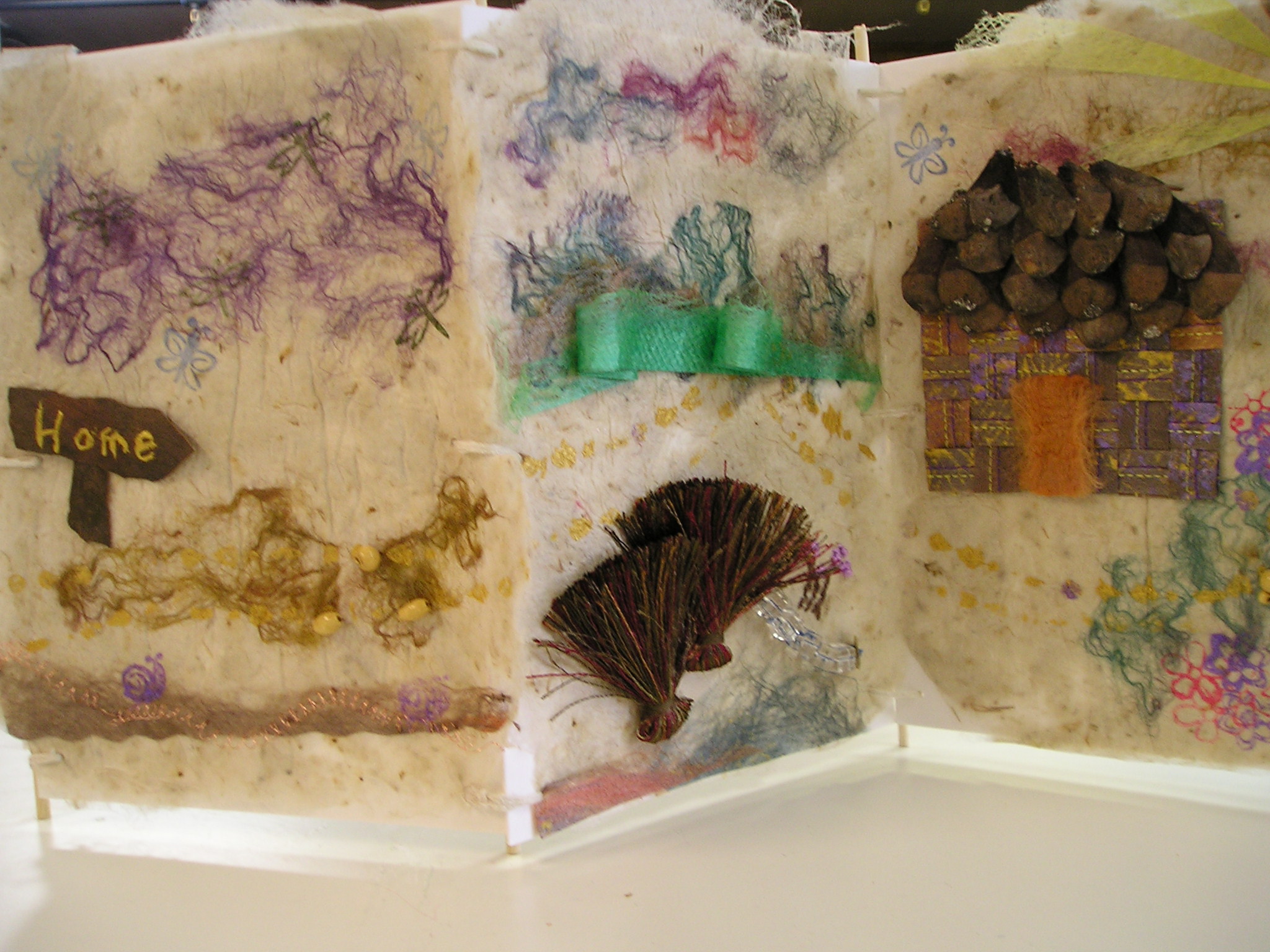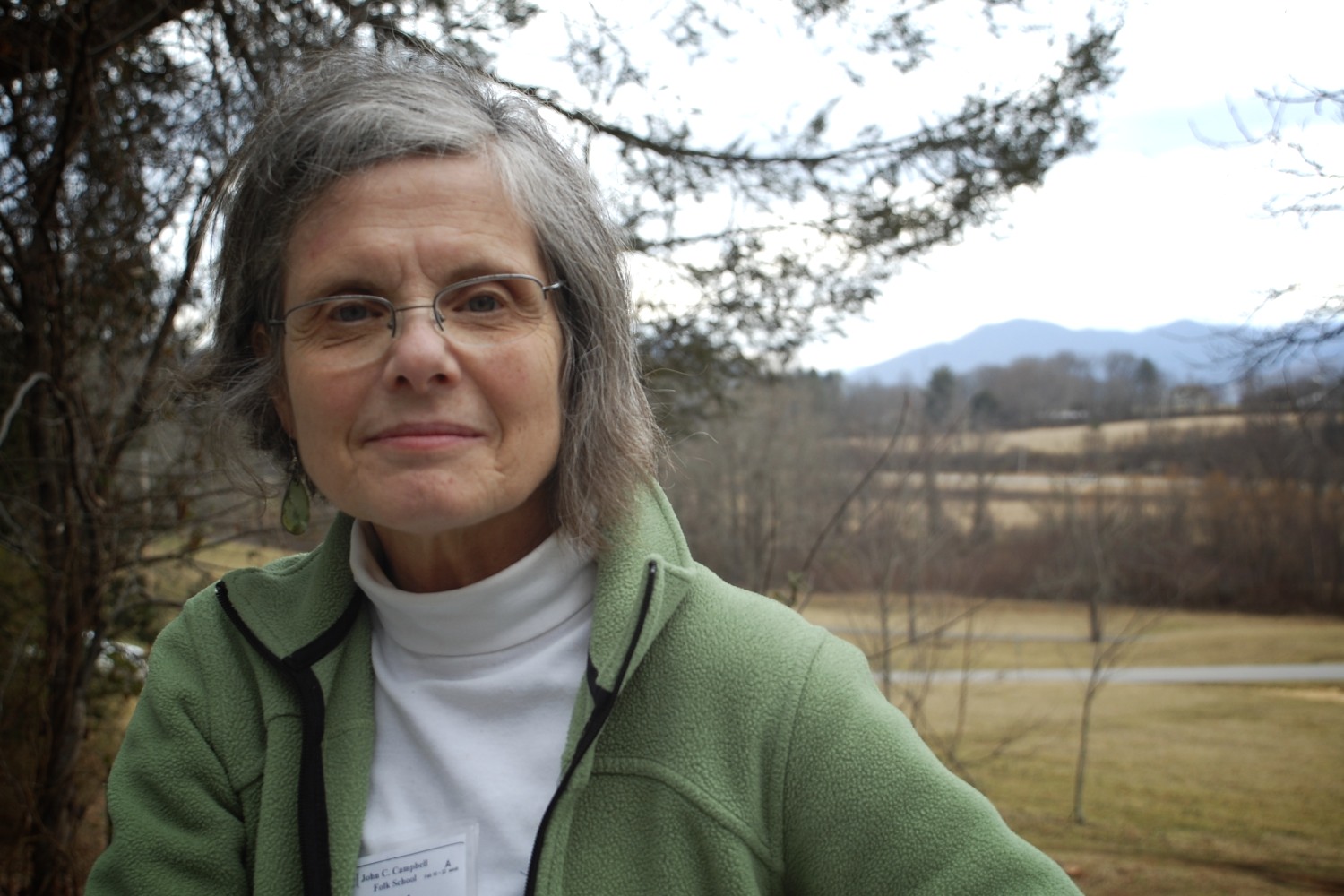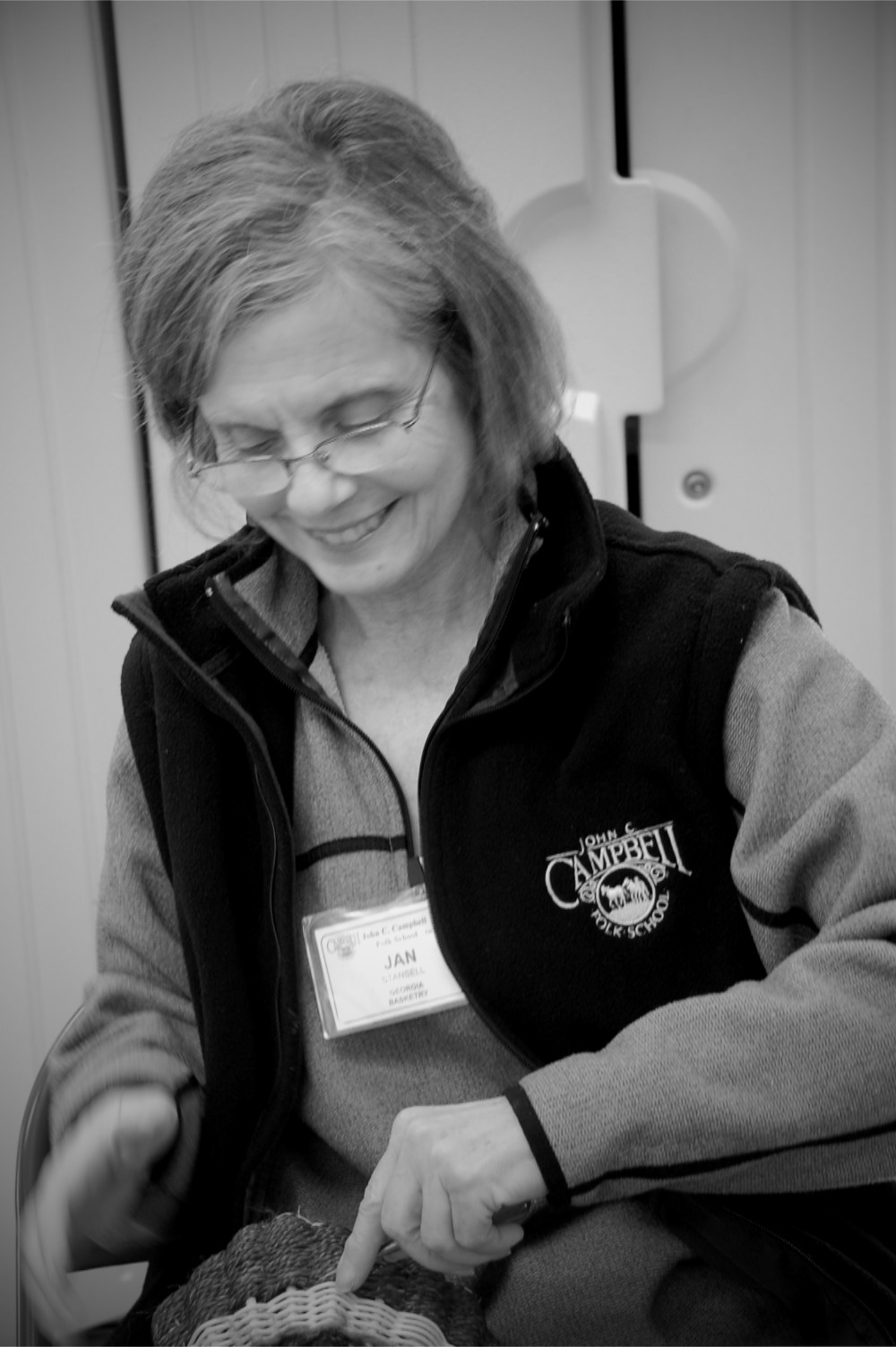I stopped by the Yarn Circle on a Monday afternoon to speak with Martha Owen, our beloved longtime Resident Artist in Spinning, Knitting, Dyeing and Felt Making. We talked about many things including fiber arts, raising sheep, travel, artistic process, Fair Isle, her rich history with the Folk School, and more. Enjoy our interview!
[caption id="attachment_10134" align="aligncenter" width="480"]
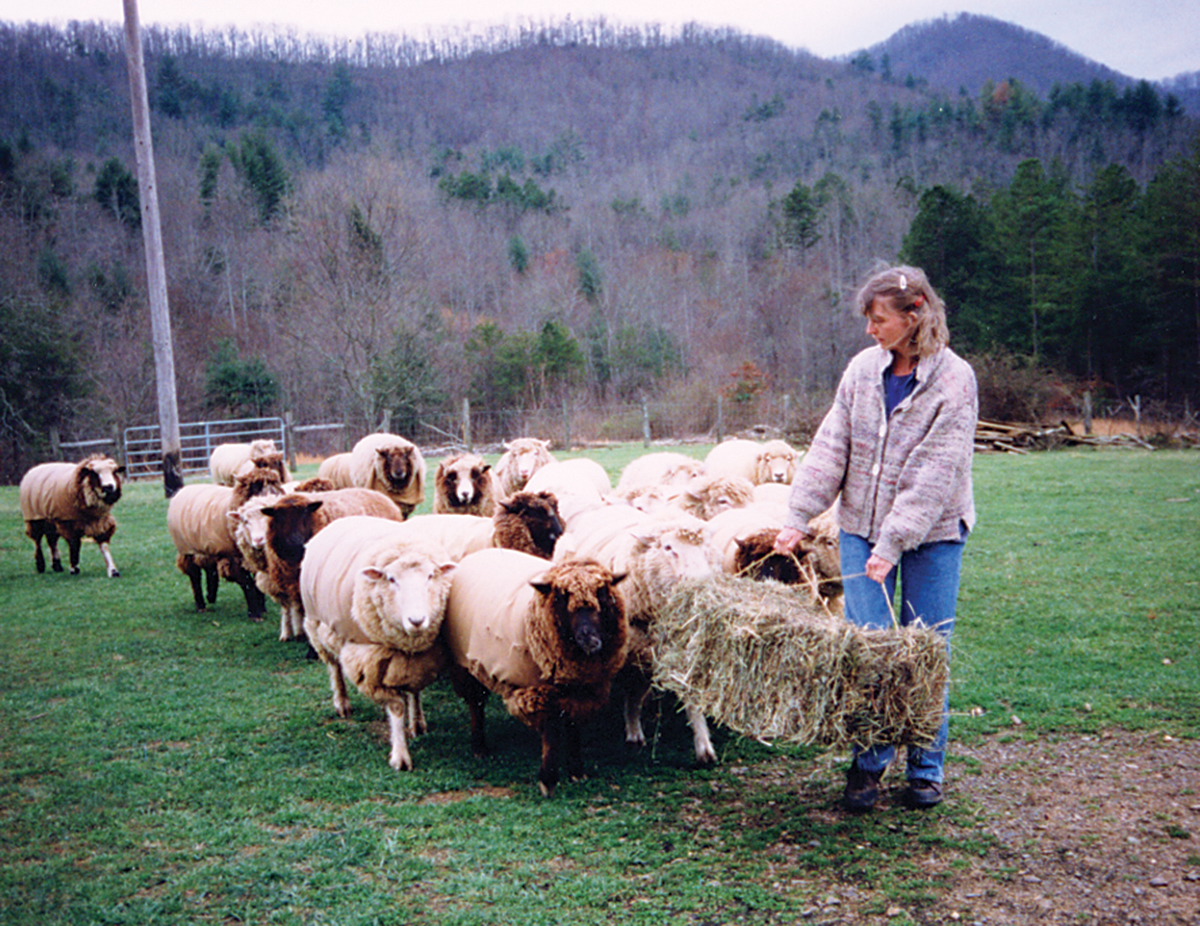
Don't ever lead your sheep with feed! A student photo op pic by Bonnie Shearer[/caption]
CP: How did you become involved with the Folk School?
MO: There was one year when I was a wee lass that I came to Little Folk School. I must have been 8, 9, or 10. I grew up in Pennsylvania, but my mother, Mary Porter Fain Owen came from Murphy. I would spend the summers here with my grandmother. At that time there was only one group of kids in Little Folk School. I learned to dance and I still sing the song I learned.
[caption id="attachment_10131" align="alignright" width="284"]
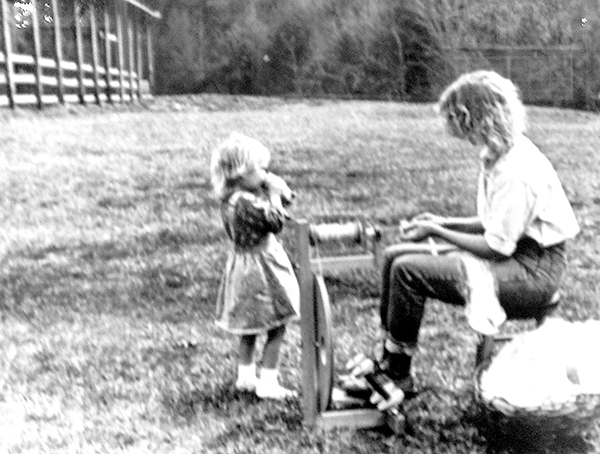
Photo shoot for Early American Life Magazine: Spinning near Festival Barn, August 1988 - That's Emolyn drinking a "grape coke" and trying to be good[/caption]
The next time, I was in college and I came for dancing again. I was doing volunteer work with a local church and we came to the dance one night. One summer my mother gave me a spinning wheel she had gotten from my great aunt and said: “Look! You always did like weird stuff.” She put the wheel down in front of me walked off and I thought “Well, I don’t know how to work with this thing.” My grandmother was reading the Cherokee Scout and saw an ad that the Campbell Folk School had a two-week class in Spinning and Dyeing. She said "Why don’t you go down and learn?" I said “Well, maybe I will.”
The full craft program that we have now had started in the '70s. The class was taught in Open House by Pam Strawn. We would card and spin and then do a dye pot when we had a pound of yarn between all of us. From that I made my first vest and I wore it for years to prove to my students that you should make something for any yarn you spin, you don’t have to wait until you spin “perfect” yarn.
My whole life turned left after taking that spinning class. That was 1978. I married my enabler, David Liden in 1979, and I had sheep by 1980.
CP: Tell me about your first sheep.
MO: I bought two ewes with lambs by their sides. One of the lambs was called "Maw Maw" and was the same age as my oldest daughter, Annie Fain. Maw Maw's portrait is hanging in our house. She was a pretty important sheep and I learned a lot of things from her. She lived to be 17.
CP: Do you have tips for beginning sheep owners?
[caption id="attachment_10141" align="alignleft" width="237"]
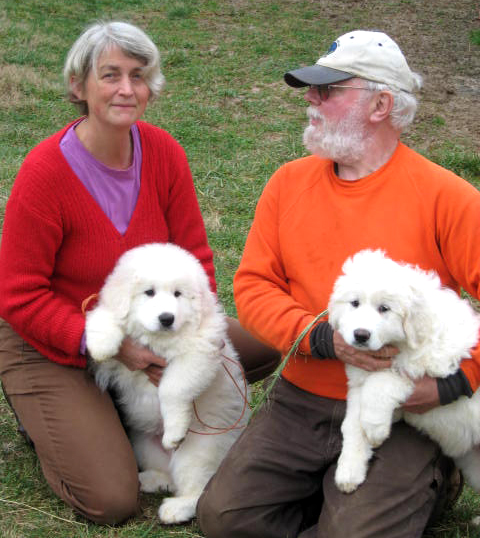
Ro-bear and Julliet, our current Great Pyrenees dogs - they weigh at least 125 pounds each now and live with the sheep (Oh, and Martha and David!) - Photo by Charlotte Crittenden[/caption]
MO: Now I have 35 sheep, but you've got to start small. Sheep reproduce quickly. While you are learning about things like housing, worming, and hoof trimming, etc, the fewer sheep the better. Security is also top priority. Sheep don’t have a way to protect themselves besides snorting, stomping, and running away which is very attractive to dogs. The biggest problems you have are neighbors' dogs and strays. Try security animals like llamas, donkeys, or Great Pyrenees. I have two Great Pyrenees right now. I haven't had any predator problems since they have been here. We are on our fourth generation. A border collie's job is the tell the sheep what to do, but the Pyrenees protect the sheep. They live with the sheep.
CP: As a current resident artist, one of your duties is to schedule teachers for the knitting, dyeing, felt making and spinning classes at the Folk School. How do you find them?
MO: Every possible way you can think of. We need someone who is passionate about what they do, someone who has done their craft a lot, but is a good teacher. I am always looking around and listening.
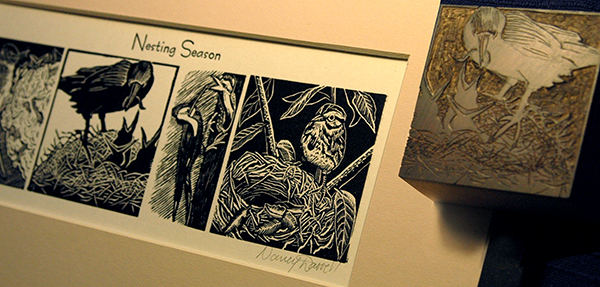 Student print and block project created in Jim Horton's Wood Engraving class at the Folk School[/caption]
I recently talked with instructor Jim Horton about printmaking, wood engraving, his upcoming classes and the new Book and Paper Arts Studio. Jim has been a printmaking/graphic design instructor for 43 years, with special interest in historic graphic tools and processes. His work ranges from job printing and book arts to limited-edition prints. Enjoy our interview!
[caption id="attachment_11904" align="alignright" width="285"]
Student print and block project created in Jim Horton's Wood Engraving class at the Folk School[/caption]
I recently talked with instructor Jim Horton about printmaking, wood engraving, his upcoming classes and the new Book and Paper Arts Studio. Jim has been a printmaking/graphic design instructor for 43 years, with special interest in historic graphic tools and processes. His work ranges from job printing and book arts to limited-edition prints. Enjoy our interview!
[caption id="attachment_11904" align="alignright" width="285"]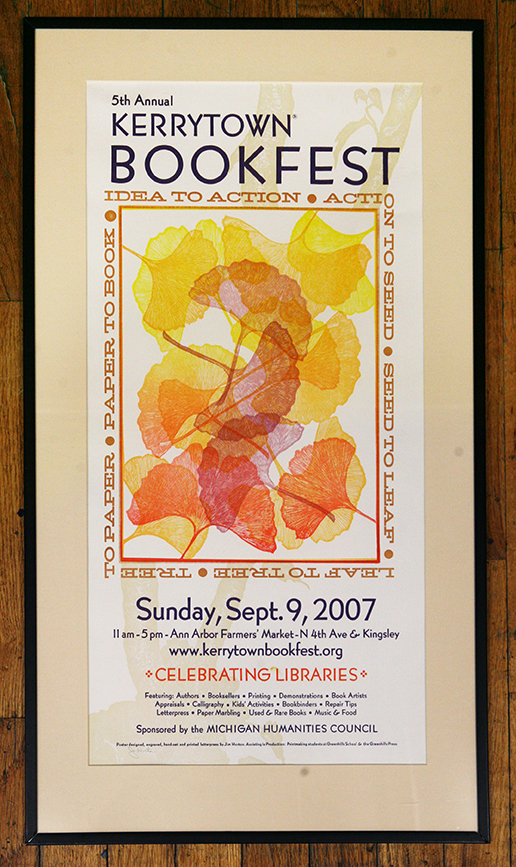 Poster by Jim Horton[/caption]
CP: Where are you from?
JH: I was born in Oklahoma, but lived most of my life in Ann Arbor, Michigan. Midwesterner to the bone, but I sure like to visit the South.
CP: Tell me about your history with printmaking?
JH: My father was a sign painter, the old fashioned kind using a brush and gold leaf. It was an incredible skill. He also did silk screen printing back when the fabric was real silk. He cut stencils by hand. So graphic arts was always highly respected on our family culture. Making woodblock prints was way cool. As a college student in art school, naturally, I gravitated to the printmaking studio. I was at home there. I loved the industriousness of proofing an edition of prints on fine paper.
CP: What do you do when you are not in Brasstown?
JH: I was an art teacher, and at every level, teaching graphic design, studio art.. all mediums. That and always printing. A few years back I deeply got into letterpress and engraving. I live in a rural area, and love working outdoors, walking and doing yoga. I still love to draw too. I go over to the local universities and draw from life (models).
[caption id="attachment_11906" align="aligncenter" width="480"]
Poster by Jim Horton[/caption]
CP: Where are you from?
JH: I was born in Oklahoma, but lived most of my life in Ann Arbor, Michigan. Midwesterner to the bone, but I sure like to visit the South.
CP: Tell me about your history with printmaking?
JH: My father was a sign painter, the old fashioned kind using a brush and gold leaf. It was an incredible skill. He also did silk screen printing back when the fabric was real silk. He cut stencils by hand. So graphic arts was always highly respected on our family culture. Making woodblock prints was way cool. As a college student in art school, naturally, I gravitated to the printmaking studio. I was at home there. I loved the industriousness of proofing an edition of prints on fine paper.
CP: What do you do when you are not in Brasstown?
JH: I was an art teacher, and at every level, teaching graphic design, studio art.. all mediums. That and always printing. A few years back I deeply got into letterpress and engraving. I live in a rural area, and love working outdoors, walking and doing yoga. I still love to draw too. I go over to the local universities and draw from life (models).
[caption id="attachment_11906" align="aligncenter" width="480"]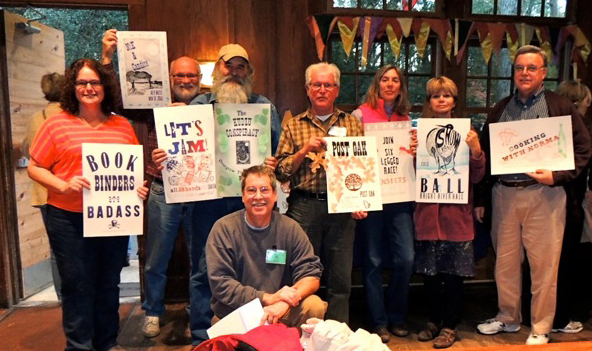 Class photo and projects from Jim's class: "The Art of the Great American Poster"[/caption]
CP: How long have you been coming to/teaching at the Folk School?
JH: I want to say about seven years. Dea Sasso got me here, and she was right. People like the Pattersons, we can only get down here in these hills.
[caption id="attachment_11910" align="alignright" width="480"]
Class photo and projects from Jim's class: "The Art of the Great American Poster"[/caption]
CP: How long have you been coming to/teaching at the Folk School?
JH: I want to say about seven years. Dea Sasso got me here, and she was right. People like the Pattersons, we can only get down here in these hills.
[caption id="attachment_11910" align="alignright" width="480"]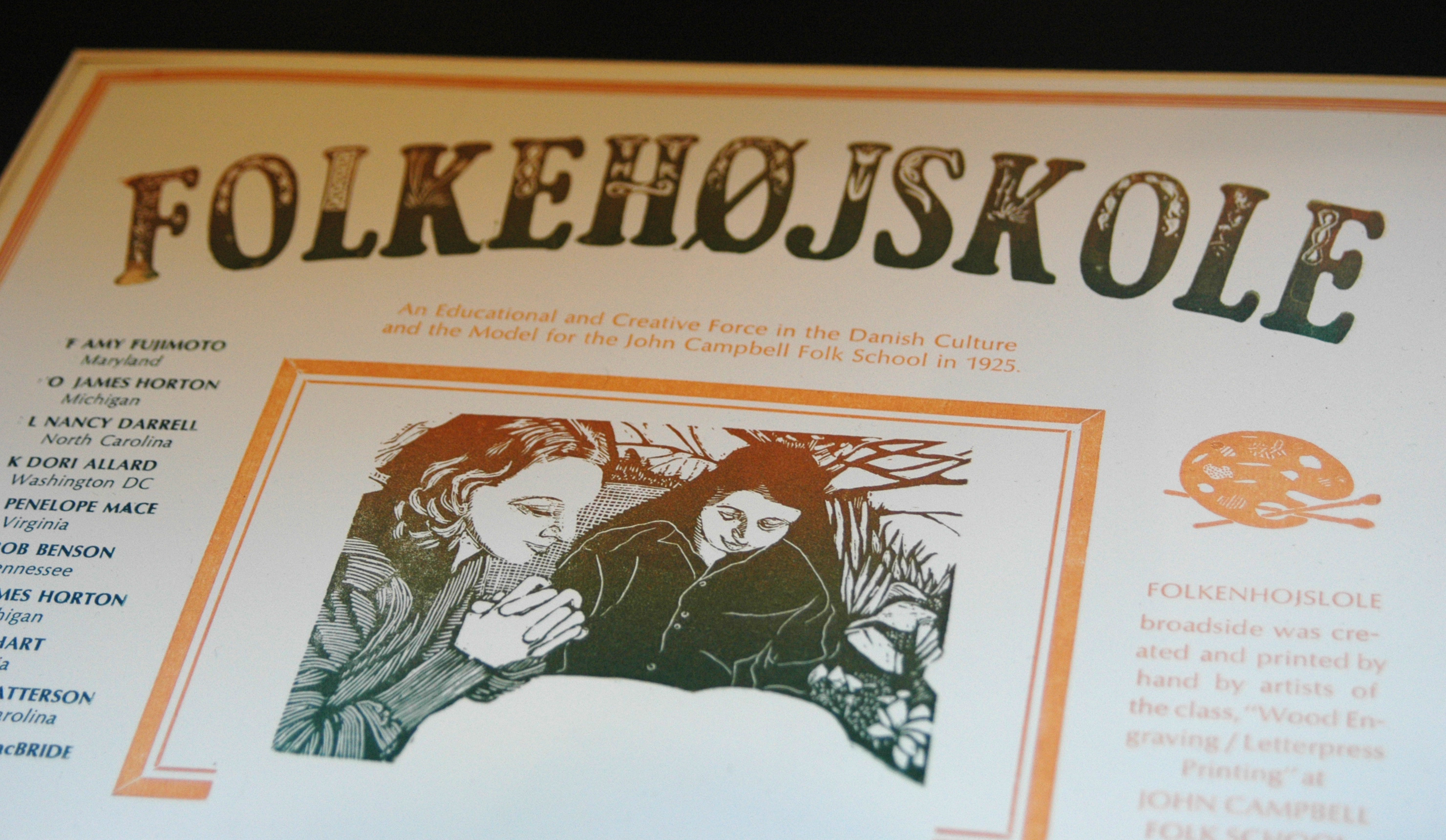 Folkehøjskole print by Jim Horton and illustrations by Nancy Darrell[/caption]
CP: What are projects are you working on currently? Where do you draw inspirations from?
JH: I am illustrating and printing a book of traditional folk songs. I love cowboy songs...why? I don't know. I also love old gospel, though I am not the least bit religious in a doctrinal sense.
Folkehøjskole print by Jim Horton and illustrations by Nancy Darrell[/caption]
CP: What are projects are you working on currently? Where do you draw inspirations from?
JH: I am illustrating and printing a book of traditional folk songs. I love cowboy songs...why? I don't know. I also love old gospel, though I am not the least bit religious in a doctrinal sense.





